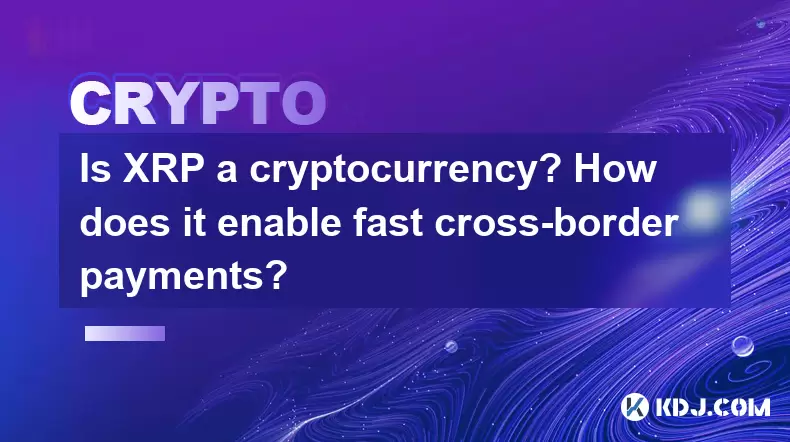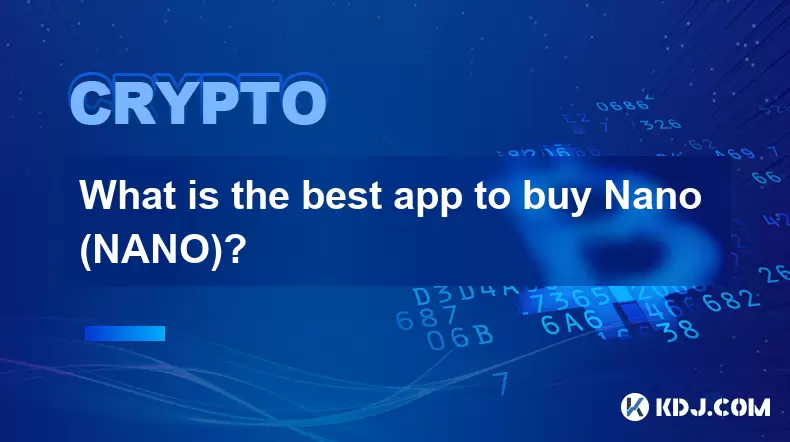-
 Bitcoin
Bitcoin $116900
0.00% -
 Ethereum
Ethereum $4280
5.48% -
 XRP
XRP $3.265
-1.45% -
 Tether USDt
Tether USDt $1.000
-0.01% -
 BNB
BNB $807.0
1.41% -
 Solana
Solana $183.1
2.93% -
 USDC
USDC $0.9999
0.00% -
 Dogecoin
Dogecoin $0.2440
6.50% -
 TRON
TRON $0.3357
-0.88% -
 Cardano
Cardano $0.8178
2.63% -
 Hyperliquid
Hyperliquid $44.13
7.45% -
 Chainlink
Chainlink $21.39
9.09% -
 Stellar
Stellar $0.4524
-0.84% -
 Sui
Sui $3.957
2.13% -
 Bitcoin Cash
Bitcoin Cash $572.7
-2.54% -
 Hedera
Hedera $0.2671
1.54% -
 Avalanche
Avalanche $24.77
4.17% -
 Ethena USDe
Ethena USDe $1.001
0.02% -
 Litecoin
Litecoin $122.3
-1.94% -
 Toncoin
Toncoin $3.432
2.26% -
 UNUS SED LEO
UNUS SED LEO $9.007
0.49% -
 Shiba Inu
Shiba Inu $0.00001396
5.26% -
 Uniswap
Uniswap $11.09
1.64% -
 Polkadot
Polkadot $4.155
4.57% -
 Dai
Dai $1.000
0.00% -
 Pepe
Pepe $0.00001253
5.11% -
 Cronos
Cronos $0.1588
2.67% -
 Bitget Token
Bitget Token $4.512
0.05% -
 Monero
Monero $275.0
0.64% -
 Ethena
Ethena $0.7527
15.10%
Is XRP a cryptocurrency? How does it enable fast cross-border payments?
XRP, a cryptocurrency by Ripple Labs, enables fast cross-border payments by serving as a bridge currency, allowing quick and cost-effective currency conversions.
May 09, 2025 at 04:21 pm

Is XRP a cryptocurrency? How does it enable fast cross-border payments?
XRP is indeed a cryptocurrency, and it plays a significant role in facilitating fast cross-border payments. Created by Ripple Labs, XRP is designed to serve as a bridge currency in international transactions, enabling quick and cost-effective transfers between different currencies. This article will delve into the nature of XRP as a cryptocurrency and explore how it enables efficient cross-border payments.
What is XRP?
XRP is a digital asset created by Ripple Labs, a company focused on providing solutions for global payment systems. Unlike traditional cryptocurrencies like Bitcoin, which were developed to function as decentralized currencies, XRP was specifically designed to improve the efficiency of cross-border payments. It operates on the Ripple Protocol consensus ledger (RippleNet), which is a decentralized payment protocol that allows for real-time gross settlement, currency exchange, and remittance.
How Does XRP Function as a Cryptocurrency?
As a cryptocurrency, XRP uses blockchain technology to record and verify transactions. However, its blockchain, known as the XRP Ledger, operates differently from other blockchains. Instead of using proof-of-work or proof-of-stake, the XRP Ledger uses a consensus protocol where a group of trusted validators agree on the order and outcome of transactions. This consensus mechanism allows for faster transaction processing and lower fees compared to other cryptocurrencies.
The Role of XRP in Cross-Border Payments
XRP plays a crucial role in enabling fast cross-border payments through its use as a bridge currency. When a financial institution wants to send money across borders, it can convert the local currency into XRP, transfer the XRP to the recipient's financial institution, and then convert the XRP back into the recipient's local currency. This process is facilitated by RippleNet, Ripple's global network of financial institutions.
How XRP Enables Fast Transactions
The speed of XRP transactions is one of its most significant advantages. Transactions on the XRP Ledger are processed in 3-5 seconds, which is significantly faster than other cryptocurrencies like Bitcoin, which can take up to an hour to confirm a transaction. This speed is achieved through the consensus protocol, which allows for rapid validation of transactions without the need for mining.
How XRP Reduces Costs
In addition to speed, XRP also helps reduce the costs associated with cross-border payments. Traditional international transfers often involve multiple intermediaries, each charging fees, which can add up to significant costs. By using XRP as a bridge currency, transactions can be settled directly between the sending and receiving institutions, eliminating the need for intermediaries and reducing fees. This makes XRP an attractive option for banks and financial institutions looking to lower their costs.
The Process of Using XRP for Cross-Border Payments
To understand how XRP enables fast cross-border payments, it's helpful to look at the step-by-step process:
- Initiate the Transfer: The sender's financial institution initiates a payment request to send money to the recipient's institution.
- Convert to XRP: The sender's institution converts the local currency into XRP.
- Transfer XRP: The XRP is transferred to the recipient's institution via the XRP Ledger.
- Convert Back to Local Currency: The recipient's institution converts the XRP back into the local currency.
- Complete the Transaction: The recipient receives the funds in their local currency, completing the cross-border payment.
This process can be completed in a matter of seconds, thanks to the efficiency of the XRP Ledger and RippleNet.
Real-World Applications of XRP
Several financial institutions and payment providers have adopted XRP to facilitate their cross-border payment services. For example, MoneyGram partnered with Ripple to use XRP for faster and cheaper international transfers. Similarly, Santander launched a service called Santander One Pay FX, which uses Ripple's technology to enable instant international payments. These real-world applications demonstrate the practical benefits of using XRP for cross-border transactions.
The Security of XRP Transactions
Security is a critical consideration for any cryptocurrency, and XRP is no exception. The XRP Ledger uses a robust consensus protocol to ensure the integrity of transactions. Additionally, transactions are recorded on a public ledger, making it difficult for malicious actors to alter transaction data. Ripple Labs also employs various security measures to protect the XRP network from potential threats.
The Regulatory Environment for XRP
The regulatory environment for XRP has been a topic of discussion within the cryptocurrency community. In some jurisdictions, XRP is classified as a cryptocurrency, while in others, it may be considered a security. This classification can impact how financial institutions use XRP for cross-border payments. Ripple Labs has been working with regulators to ensure compliance with various regulatory frameworks, which is crucial for the widespread adoption of XRP.
Frequently Asked Questions
Q: Can individuals use XRP for personal transactions?
A: Yes, individuals can use XRP for personal transactions. They can buy XRP on cryptocurrency exchanges and use it to send money to other individuals or convert it back into their local currency. However, the primary use case for XRP is in facilitating cross-border payments between financial institutions.
Q: How does XRP compare to other cryptocurrencies like Bitcoin and Ethereum?
A: XRP differs from Bitcoin and Ethereum in several ways. While Bitcoin and Ethereum were designed as decentralized digital currencies, XRP was created to serve as a bridge currency for cross-border payments. XRP transactions are faster and cheaper than those on Bitcoin and Ethereum, making it more suitable for financial institutions looking to optimize their payment processes.
Q: Is XRP decentralized?
A: XRP is considered to be semi-decentralized. While the XRP Ledger is open-source and maintained by a decentralized network of validators, Ripple Labs plays a significant role in the ecosystem. This semi-decentralized nature has sparked debates within the cryptocurrency community about the true decentralization of XRP.
Q: What are the potential risks of using XRP for cross-border payments?
A: Like any cryptocurrency, using XRP for cross-border payments comes with certain risks. These include regulatory uncertainty, potential security breaches, and market volatility. Financial institutions must carefully assess these risks and implement appropriate safeguards to mitigate them when using XRP for their payment services.
Disclaimer:info@kdj.com
The information provided is not trading advice. kdj.com does not assume any responsibility for any investments made based on the information provided in this article. Cryptocurrencies are highly volatile and it is highly recommended that you invest with caution after thorough research!
If you believe that the content used on this website infringes your copyright, please contact us immediately (info@kdj.com) and we will delete it promptly.
- XRP Price, Remittix, and Ripple Rivals: A Crypto Cocktail
- 2025-08-10 10:50:16
- Live Crypto Updates, August 10: ETH Soars, Trump's Crypto Play, and More!
- 2025-08-10 11:30:16
- Riding the Wave: Ethereum, DeFi, and the Liquid Staking Derivatives (LSDs) Surge
- 2025-08-10 10:30:15
- Strobe Ventures, ENA Tokens, and the Surge: What's the Deal?
- 2025-08-10 10:35:15
- Shiba Inu, Pepe, and Remittix: A Tale of Memes, Hype, and Real-World Utility
- 2025-08-10 08:30:12
- Ethereum Price, ETH Tokens, Rally Prediction: Is a New All-Time High In Sight?
- 2025-08-10 08:30:12
Related knowledge

How to purchase Aragon (ANT)?
Aug 09,2025 at 11:56pm
Understanding Aragon (ANT) and Its PurposeAragon (ANT) is a decentralized governance token that powers the Aragon Network, a platform built on the Eth...

Where can I buy UMA (UMA)?
Aug 07,2025 at 06:42pm
Understanding UMA and Its Role in Decentralized FinanceUMA (Universal Market Access) is an Ethereum-based decentralized finance (DeFi) protocol design...

How to buy Storj (STORJ) tokens?
Aug 09,2025 at 07:28am
Understanding Storj (STORJ) and Its Role in Decentralized StorageStorj is a decentralized cloud storage platform that leverages blockchain technology ...

What is the best app to buy Nano (NANO)?
Aug 09,2025 at 03:35am
Understanding Nano (NANO) and Its Unique FeaturesNano is a feeless, instant cryptocurrency designed for fast peer-to-peer transactions. Unlike many ot...

Where can I purchase Siacoin (SC)?
Aug 08,2025 at 11:14am
Understanding Siacoin (SC) and Its Role in the Sia NetworkSiacoin (SC) is the native cryptocurrency of the Sia decentralized cloud storage platform, a...

How to sell my Ontology (ONT) tokens?
Aug 09,2025 at 06:08pm
Understanding Ontology (ONT) and Its Trading EcosystemBefore selling your Ontology (ONT) tokens, it's essential to understand the nature of the crypto...

How to purchase Aragon (ANT)?
Aug 09,2025 at 11:56pm
Understanding Aragon (ANT) and Its PurposeAragon (ANT) is a decentralized governance token that powers the Aragon Network, a platform built on the Eth...

Where can I buy UMA (UMA)?
Aug 07,2025 at 06:42pm
Understanding UMA and Its Role in Decentralized FinanceUMA (Universal Market Access) is an Ethereum-based decentralized finance (DeFi) protocol design...

How to buy Storj (STORJ) tokens?
Aug 09,2025 at 07:28am
Understanding Storj (STORJ) and Its Role in Decentralized StorageStorj is a decentralized cloud storage platform that leverages blockchain technology ...

What is the best app to buy Nano (NANO)?
Aug 09,2025 at 03:35am
Understanding Nano (NANO) and Its Unique FeaturesNano is a feeless, instant cryptocurrency designed for fast peer-to-peer transactions. Unlike many ot...

Where can I purchase Siacoin (SC)?
Aug 08,2025 at 11:14am
Understanding Siacoin (SC) and Its Role in the Sia NetworkSiacoin (SC) is the native cryptocurrency of the Sia decentralized cloud storage platform, a...

How to sell my Ontology (ONT) tokens?
Aug 09,2025 at 06:08pm
Understanding Ontology (ONT) and Its Trading EcosystemBefore selling your Ontology (ONT) tokens, it's essential to understand the nature of the crypto...
See all articles

























































































